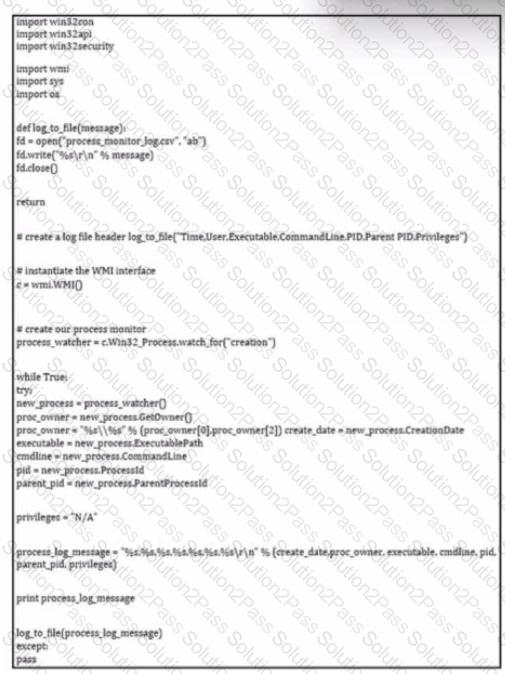300-215 Cisco Conducting Forensic Analysis and Incident Response Using Cisco CyberOps Technologies (CBRFIR) Free Practice Exam Questions (2025 Updated)
Prepare effectively for your Cisco 300-215 Conducting Forensic Analysis and Incident Response Using Cisco CyberOps Technologies (CBRFIR) certification with our extensive collection of free, high-quality practice questions. Each question is designed to mirror the actual exam format and objectives, complete with comprehensive answers and detailed explanations. Our materials are regularly updated for 2025, ensuring you have the most current resources to build confidence and succeed on your first attempt.
A security team received reports of users receiving emails linked to external or unknown URLs that are non-returnable and non-deliverable. The ISP also reported a 500% increase in the amount of ingress and egress email traffic received. After detecting the problem, the security team moves to the recovery phase in their incident response plan. Which two actions should be taken in the recovery phase of this incident? (Choose two.)
A network host is infected with malware by an attacker who uses the host to make calls for files and shuttle traffic to bots. This attack went undetected and resulted in a significant loss. The organization wants to ensure this does not happen in the future and needs a security solution that will generate alerts when command and control communication from an infected device is detected. Which network security solution should be recommended?
Which information is provided about the object file by the “-h” option in the objdump line commandobjdump –b oasys –m vax –h fu.o?
An engineer received a call to assist with an ongoing DDoS attack. The Apache server is being targeted, and availability is compromised. Which step should be taken to identify the origin of the threat?
A security team detected an above-average amount of inbound tcp/135 connection attempts from unidentified senders. The security team is responding based on their incident response playbook. Which two elements are part of the eradication phase for this incident? (Choose two.)
What are two features of Cisco Secure Endpoint? (Choose two.)
Refer to the exhibit.
What is occurring?
A threat intelligence report identifies an outbreak of a new ransomware strain spreading via phishing emails that contain malicious URLs. A compromised cloud service provider, XYZCloud, is managing the SMTP servers that are sending the phishing emails. A security analyst reviews the potential phishing emails and identifies that the email is coming from XYZCloud. The user has not clicked the embedded malicious URL. What is the next step that the security analyst should take to identify risk to the organization?
Refer to the exhibit.
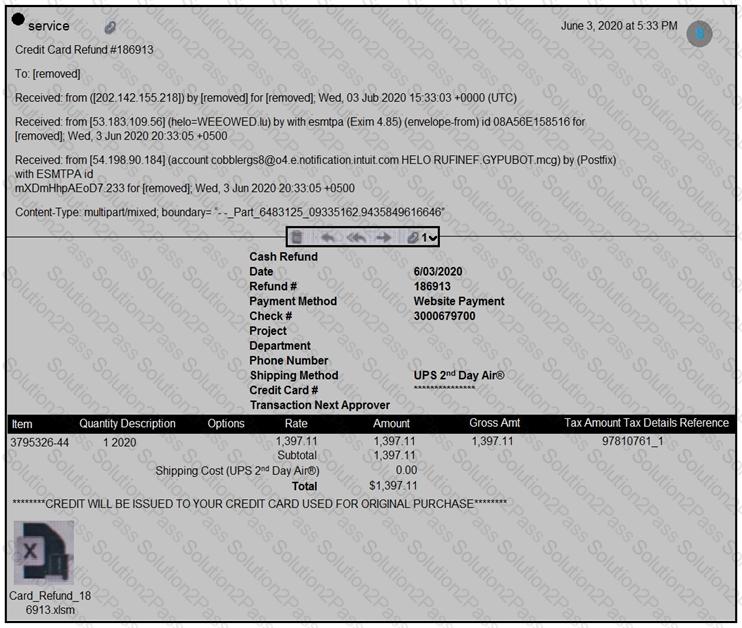
Which element in this email is an indicator of attack?
Refer to the exhibit.
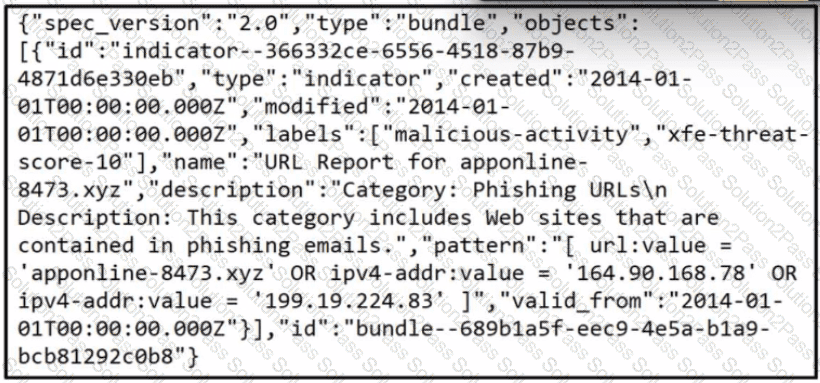
Which two actions should be taken as a result of this information? (Choose two.)
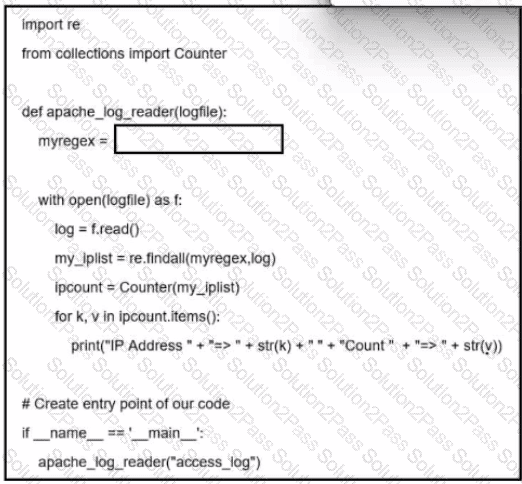
Refer to the exhibit. A network administrator creates an Apache log parser by using Python. What needs to be added in the box where the code is missing to accomplish the requirement?
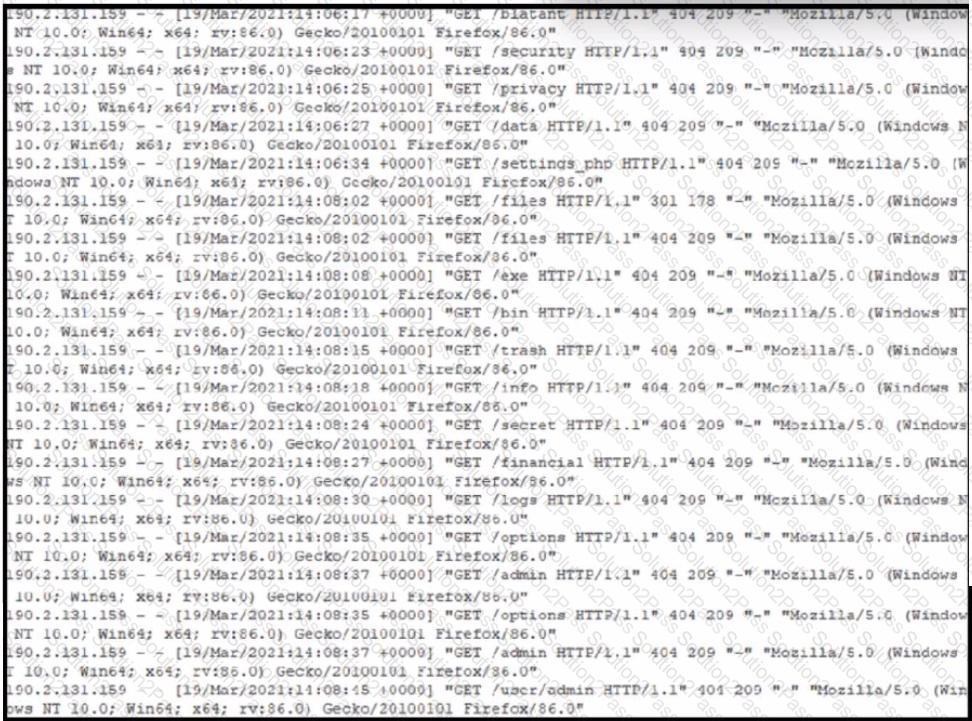
Refer to the exhibit. A security analyst notices that a web application running on NGINX is generating an unusual number of log messages. The application is operational and reachable. What is the cause of this activity?
Which tool should be used for dynamic malware analysis?
An employee receives an email from a “trusted” person containing a hyperlink that is malvertising. The employee clicks the link and the malware downloads. An information analyst observes an alert at the SIEM and engages the cybersecurity team to conduct an analysis of this incident in accordance with the incident response plan. Which event detail should be included in this root cause analysis?
Refer to the exhibit.
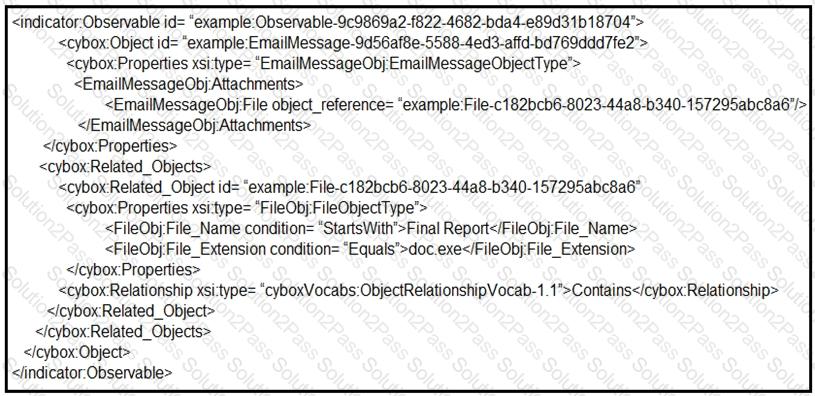
Which determination should be made by a security analyst?
Refer to the exhibit.
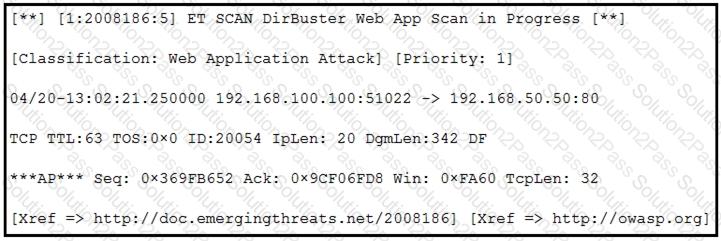
According to the SNORT alert, what is the attacker performing?
Refer to the exhibit.
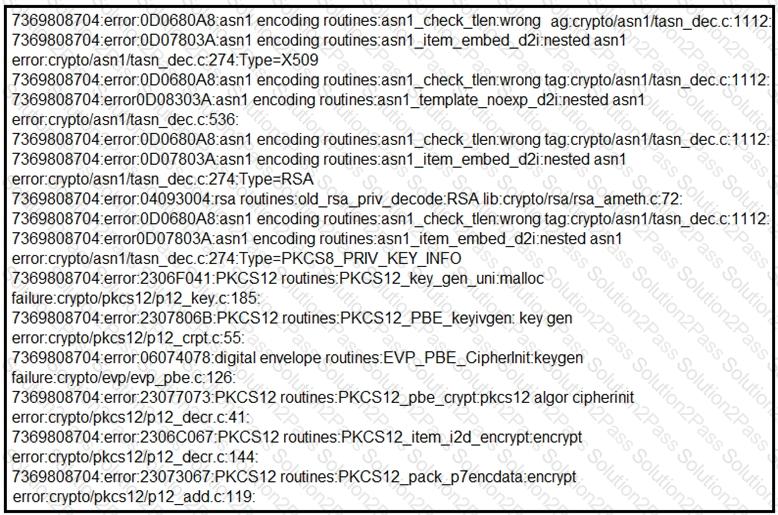
What should be determined from this Apache log?
Refer to the exhibit.
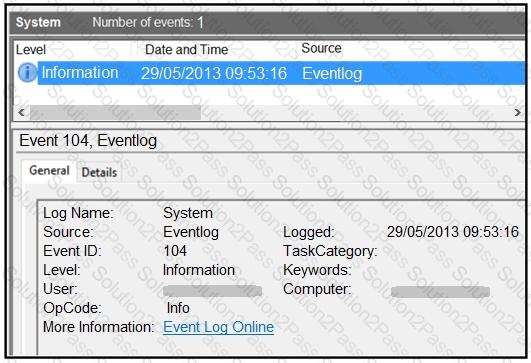
An employee notices unexpected changes and setting modifications on their workstation and creates an incident ticket. A support specialist checks processes and services but does not identify anything suspicious. The ticket was escalated to an analyst who reviewed this event log and also discovered that the workstation had multiple large data dumps on network shares. What should be determined from this information?

